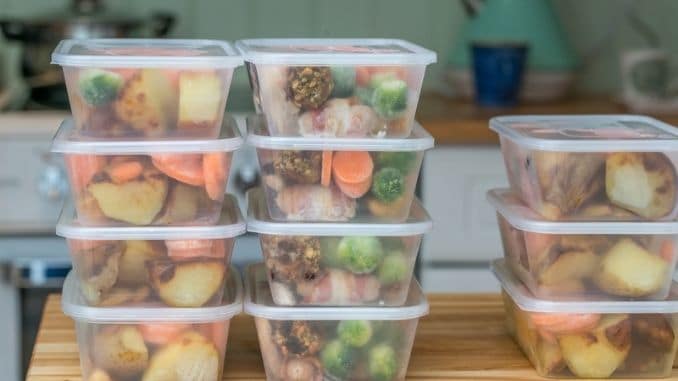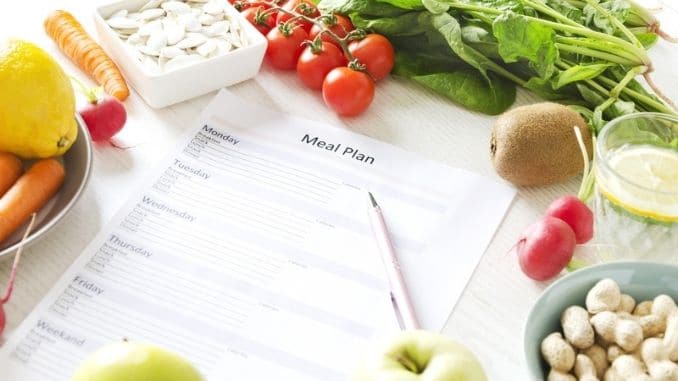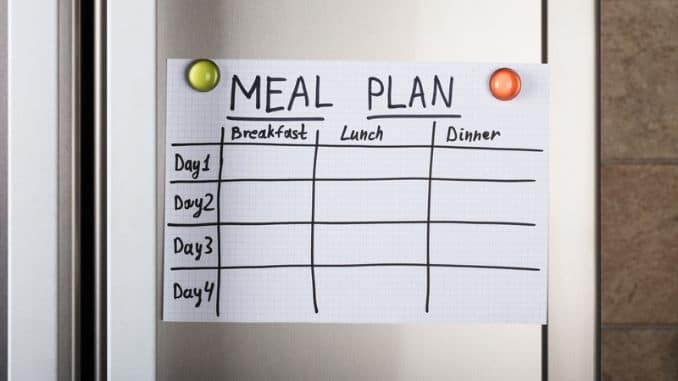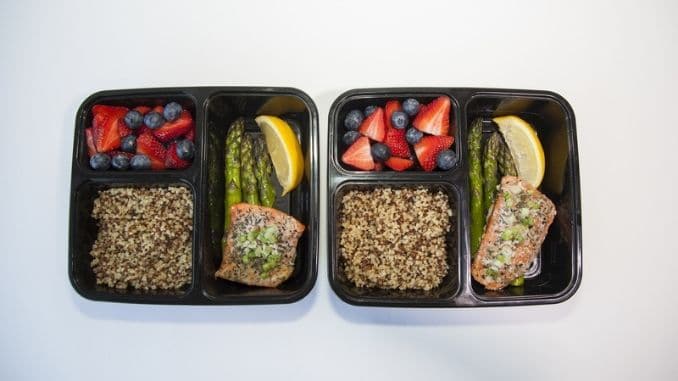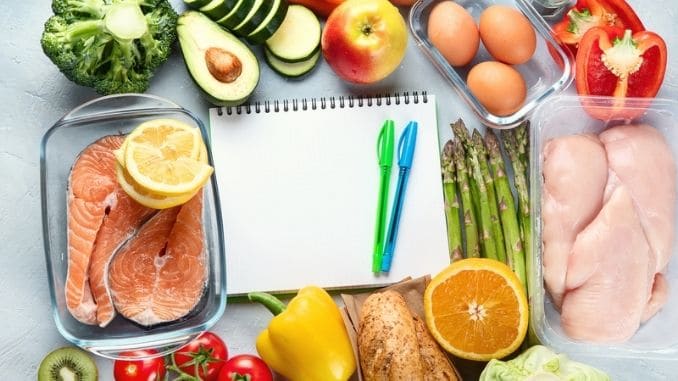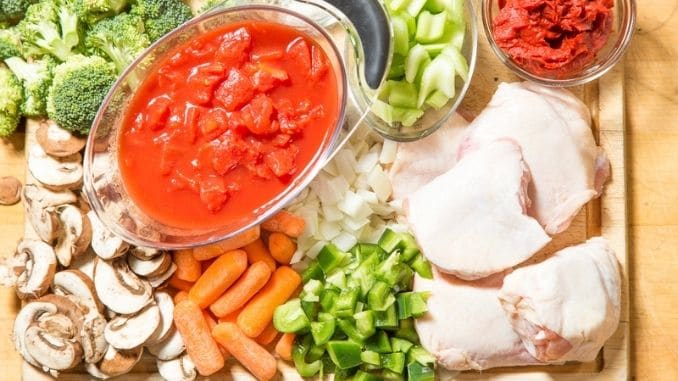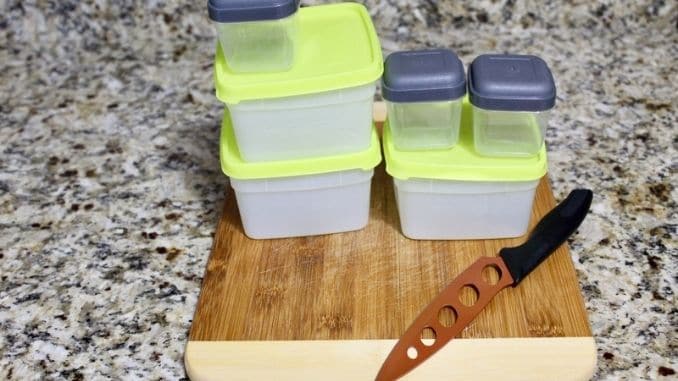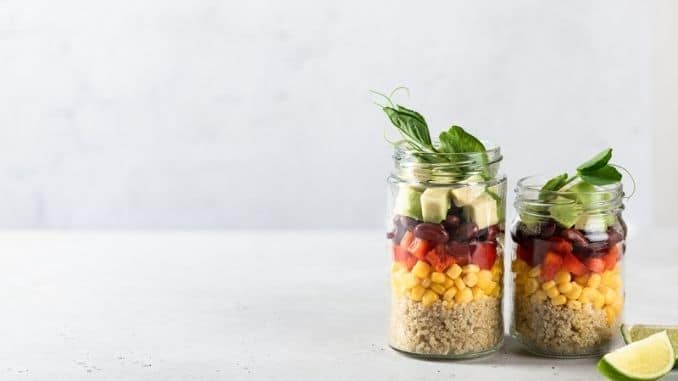Eating on the go usually results in eating high-fat and high-sugar items that over time, increase your risk of overweight and obesity, diabetes, and heart disease. One of the best ways to be sure that you regularly eat healthy, wholesome meals is to plan ahead.
If you’d like to develop a successful meal-planning habit, try the tips below.
What Are the Benefits of Meal Prep?
Preparing and planning your meals ahead of time creates several benefits for you and your family. Some of these include:
- Save time: If you plan and prepare your meals ahead of time, you won’t have to spend so much time doing so on a day-to-day basis.
- Save money: Planning your meals helps you avoid impulse buying and ensures you’ll use all the ingredients you buy.
- Reduces stress: Everyone knows what it feels like to come home after a busy day at work and realize you have nothing planned for dinner. Taking care of this task ahead of time makes each day a little easier.
- Improves health: When you plan meals ahead of time, you have a lot better chance of eating healthy than if you simply grab whatever’s near when you’re hungry.
How to Get Started with Meal Planning
There are a few things you’ll need to prepare for meal planning.
- Containers: If you prepare your meals ahead of time, you’ll need plenty of containers to put them in. Make sure you have enough reusable containers, such as plastic and glass food storage containers, mason jars, lunch boxes, plastic storage bags, and compartment meal containers.
- Planner: You’ll need somewhere to keep track of the meals that you plan and the ingredients you’ll need for them. This could be a notebook planner, Google calendar, a document on your computer, or even an app. Some popular and time-saving meal-prep apps include Platejoy, Yummly, and Mealime. Check your favorite app stores for each.
- Mixing bowls: It’s likely you already have some of these, but having a lot of bowls can be helpful when preparing meals ahead of time. Check to see if you may benefit from having a few more.
- Slow cooker: A slow cooker can make a lot of meals easier to prepare. You simply dump the ingredients in it and it does the rest.
- Recipes: What meals will you create? Gather some of your favorite recipes so you're prepared. It's best to start simple, to begin with. Choose those recipes that look like they're easy to make.
15 Helpful Meal-Prep Tips
1. Start Small
If you’ve never done much meal planning in the past, don’t bite off more than you can chew right away. Give yourself time to figure this out and to determine what works best for you. Plan out just one or two dinners the first couple of weeks, for instance, maybe with a few pre-planned snacks.
Think of the meal that currently gives you the most grief. Maybe that's your Monday night dinner or your weekend breakfast. Plan that one.
2. Determine Your Main Goal
Are you meal planning to save time, save money, or get healthier? You may be interested in all of these outcomes, but it can help to choose the most important one to get started. If your main goal is to get healthy, for instance, you’ll want to focus mainly on nutritious meals. If your main goal is to save time, you’ll want to seek out easy-to-make meals. Choose your main goal and let it guide you as you move forward.
3. Schedule Your Planning Time
When will you plan out your meals? If you don’t schedule a time to do it, it probably won’t happen. Use your calendar to determine a time and date that will work best for you. Try to choose one that you can stick to each week.
4. Select Your Recipes
As you go, you’ll probably gather new recipes to try. But when you’re getting started, it’s best to stick with what you already know, just to make it easier. Select up to five recipes that you want to use for your first week or two of planning. Some may be for breakfast, lunch, and/or dinner, while others may be for snacks and desserts.
Consider meals that you can eat twice. You may enjoy a casserole on Monday and have enough to enjoy it again on Thursday. Knowing you're going to eat it twice, you can make sure you have enough ingredients before you start.
5. Make a Detailed Shopping List
Once you have decided on your recipes, make a detailed shopping list of what you need to purchase to make those meals. Use a regular pen and paper, or the notes app on your phone.
In addition to buying the ingredients you need for specific recipes, you may also want to purchase some meal-prep staples so you have them around. These may include frozen fruits and vegetables, frozen brown rice and quinoa, frozen shrimp and salmon, plain oatmeal, beans, salsa, and veggie broth.
Finally, consider keeping some easy on-the-go items on hand. These may include nuts and seeds, washed greens, hard-boiled eggs, and chopped fruit.
6. Prepare Your Kitchen for Meal Prepping
You'll likely be spending time on the weekend preparing your meals. When you're ready to cook, spend a few minutes making your kitchen as prep-friendly as possible. Get the ingredients out that you'll want to use, have your recipes handy, pull over an extra table or stand, and put on some music—whatever you need to make the prepping fun and efficient.
7. Consider Partial Prep
If you don’t have an hour or two to devote to meal prep on the weekends, consider breaking up the chore into smaller chunks. Maybe you can cook a batch of rice one night, then toss the chicken in the slow cooker on another. If you’re going to use chopped veggies in your meal, chop them up ahead of time.
You don’t always have to make the entire meal beforehand. Simply making sure that the ingredients are there and ready to go can save you a lot of time.
8. Batch Cook
Devout meal planners rave about batch cooking. This is when you cook something big that you can then use for several meals. You may cook up a whole chicken, for instance, make a big pot of soup or stew, or cook up a good amount of black beans. You can then create several different meals throughout the week using these main items.
9. Create Smaller Portions
If you or someone in your family needs food on the go, create portions ahead of time. This is especially helpful when it comes to snacks. You can portioned trail mix by mixing your ingredients and then dividing them up into small plastic bags, for instance.
You can also create individual lunches and dinners if needed by using meal containers. For those who need quick breakfasts on the go, try creating smoothie packs. These may include frozen fruit, extracts, seeds, powders, and milk or juice. You can put them all into a mason jar, and then all you have to do is dump them into the blender and go.
10. Pre-Assemble Your Meals
Again, rather than make the entire meal ahead of time, you can simply assemble the meal so it’s ready to go when it’s time to prepare it. These work particularly well for those meals that you can store in the freezer or those you want to cook in the slow cooker.
Rather than cook the ingredients, just gather them together. Prepare all your vegetables for your tacos or enchiladas, for instance, so they’re ready to go when you want to cook them. Or assemble your cut-up chicken, put it in the refrigerator, then peel your potatoes and carrots so they’re ready to cook on the night of the meal. When the items are together and already half-prepared, you’ll save time making dinner.
11. Prepare Your Fruits and Vegetables
If you can, wash and prep your fruits and veggies the minute you get them home. This is particularly helpful if your goal is to eat healthier. If you look into the refrigerator and see these items ready to go, you’ll be more likely to use them.
In other words, do a bunch of chopping, peeling, and slicing beforehand and use those prepared items in your recipes later on.
12. Lunch in a Jar
To prepare lunch in advance, think beyond the bread by using your mason jars. Put nuts, grains, protein, and dressing at the bottom of the jar, then top with greens and veggies on top. Or put some rice, beans, and veggies in the jar, then when it’s time, dump them out on a tortilla, warm them up, top them off with salsa, and go.
13. Trail Your Cooking
If you do have some time on a weekend to cook, start with the recipe that will take the longest time and work your way to the shortest one. Begin by putting your items into your slow cooker, for instance, then while that’s cooking, make your casserole, then move to your quick skillet recipe. This is a good way to save time and get everything done within a couple of hours.
14. Embrace Easy
If you’re meal prepping to save time, feel free to use convenience foods. These may include pre-made sauces, dressings, cut-up veggies and fruits, and the like. Don’t think you have to make everything from scratch.
15. Use the Freezer
The freezer is your best friend when it comes to meal prep. When you’re making soup, cookie dough, or most anything, separate half the batch to go into the freezer for the future. If you have a large family, double the recipe so you can do this. This can save significant time when it comes to future meal prep.
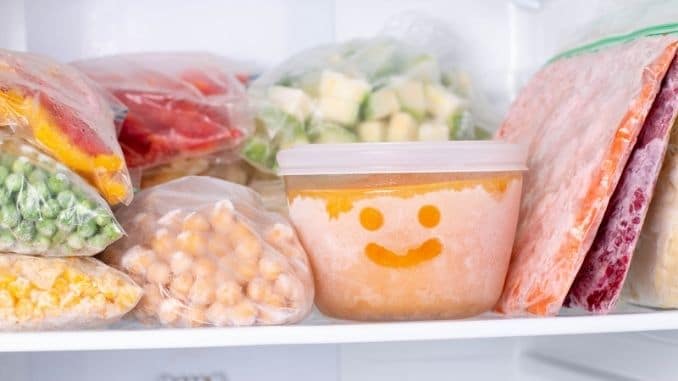
Don’t forget to use your freezer for your leftovers too. If your family would groan at having stew twice in one week, freeze it for a few weeks down the road. Meal planning may feel like more work when you first get started, but you will soon appreciate the time and energy it saves you throughout the week. Sometimes simply choosing what to make for dinner each night can seem like a chore, so do yourself a favor and give meal planning a try.
Learn the best foods to slim and heal your body – in as little as one week! Click here for more information.

